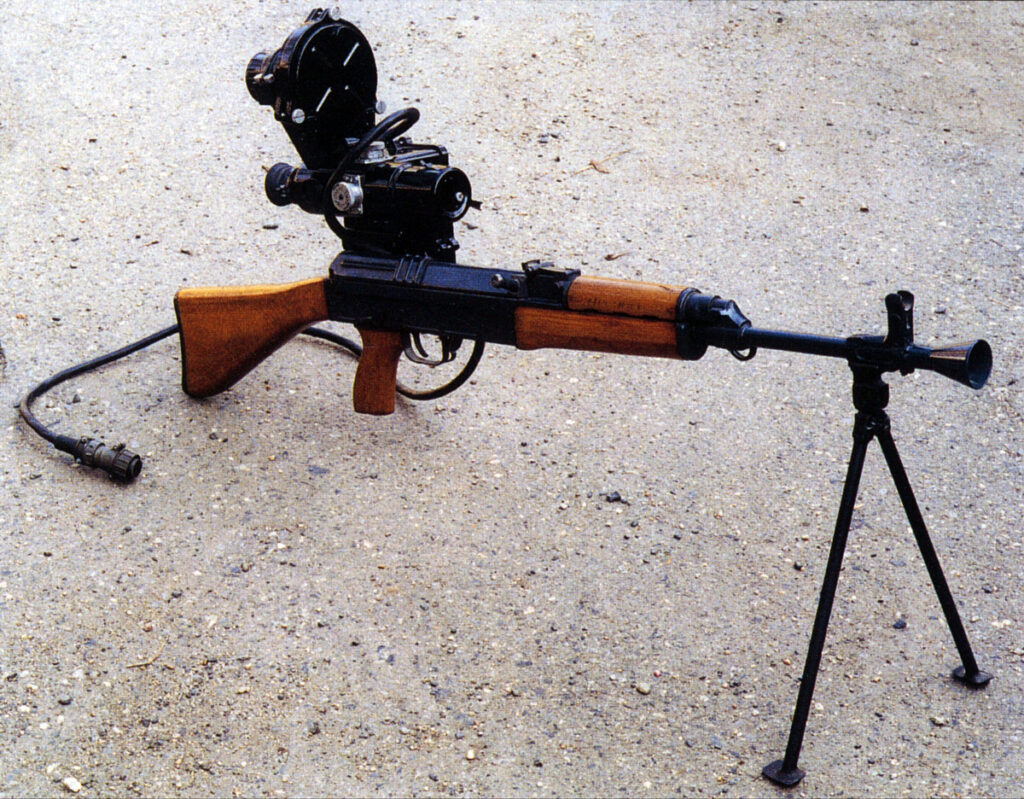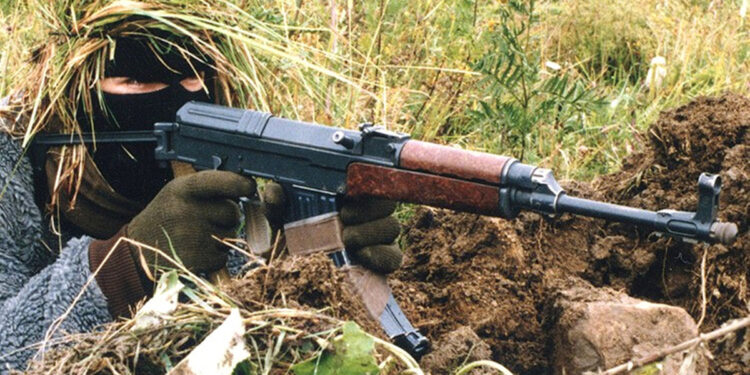By Michael Heidler –
“Just another Kalashnikov”—many may think so when looking at the Czech Samopal vzor 58. But the first impression is deceptive: except for the external appearance and the caliber, the weapon has nothing in common with most AK models.
After adoption of the cartridge M43 (7.62x39mm) as the new standard ammunition of the Warsaw Pact, it was obvious for its members to draw on the Kalashnikov models from the Russian motherland. As time went by, various individual modifications slipped into the state’s own products, depending on what the states appraised as necessary improvements. Only the Czechs acted in total contrast: they went their own way and did not take the AK47 as a basis for improvements. Only the external appearance was aligned with the weapon of the Big Brother. The internal mechanics were very different.

In January 1950 the project “KOŠTĚ” under the supervision of the arms designer Jiří Čermák was launched. The goal was to develop an automatic weapon, which was supposed to replace the adopted submachine gun models 24 and 26 (both in 7.62x25mm) and the semiautomatic rifle models 52 (7.62x45mm) and 52/57 (7.62x39mm).
Jiří Čermák had an early interest in the development of self-loading weapons, in particular for the technique of the pistol CZ-481. After returning from his two-year military service in 1950, the task to convert the self-loading CZ-491 pistol, designed by the brothers Jan and Jaroslav Kratochvil, from 9mm to 7.62x25mm at the state arms factory Česká Zbrojovka was entrusted to him. The result was the famous roller-locking CZ-52. At the same time, the factory was involved in the first attempts to create a modern automatic weapon using a short cartridge similar to the German Sturmgewehr 44 assault rifle. The initially favored Z-49 (7.5x45mm) cartridge was dropped soon and finally the Z-50 (7.62x45mm) was classified as the new standard caliber. The development project of this gas-operated weapon got the designation “CZ-502.”
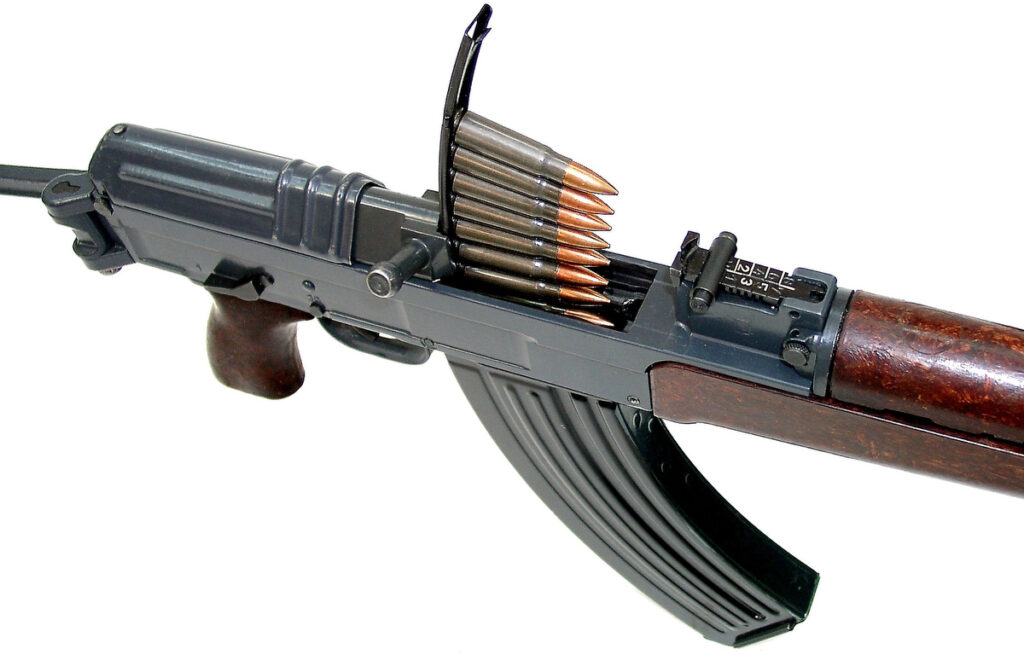
In late 1951, Jiří Čermák received an order by the head of the weapons construction section, Františkem Myškou, to develop a rapid-fire rifle for the new Z-50 cartridge. The weight of the weapon could not exceed 8.8 pounds. Čermák´s design was based on the CZ-502 and he adopted many of its parts. He shortened the barrel step-by-step and tested the muzzle velocity and the accuracy after each step. Barrel and receiver were fixed together and could be removed upwards in one piece from the lower receiver with grip-piece and stock. The whole gun was made of stamped and phosphated sheet metal parts, except for the grip-plates, fore-grip, and stock that were made of varnished birch wood.
Due to problems with manufacturing the stamped sheet metal parts, the completion of the prototypes was delayed until 1952. However, the new weapon, now designated CZ-515, did not satisfy the requirements. A big disappointment was its accuracy, it exceeded the required values by twice as much. It was the fault of the open bolt design. The bolt is held in the rear and moves forward when the trigger is pulled, so that the impact of the bolt on the chamber shakes the weapon.
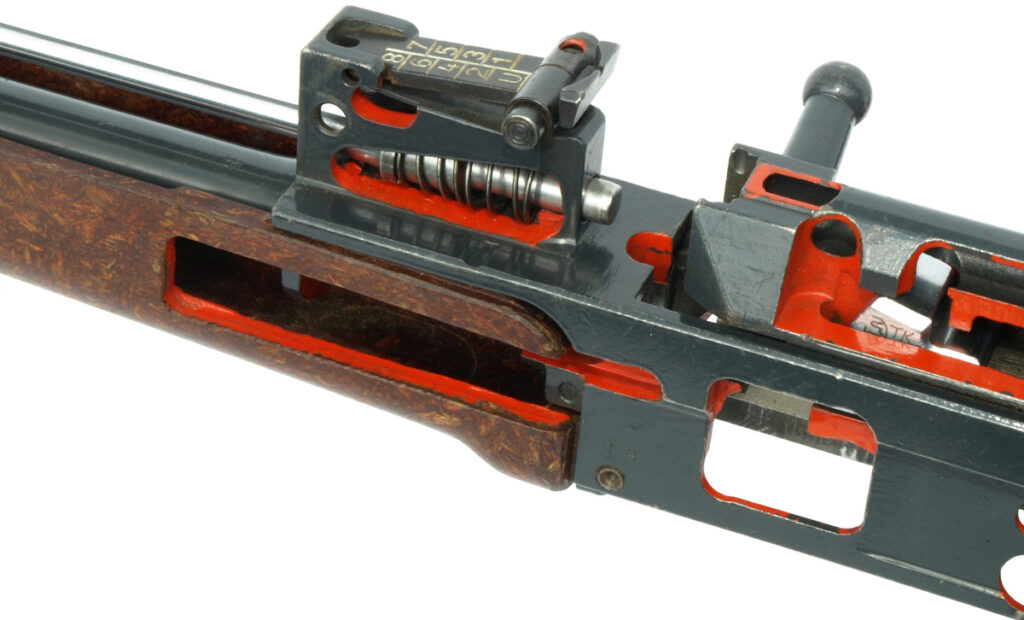
Fortunately for Čermák, the weapons of the competitors did not gain the advantage. The ZK-503 of the Kouckých brothers, a weapon of the engineer Kynčla, and two developments of the engineer J. Holečka failed to stand up to testing, too. After the first tests Jiří Čermák felt confident that only a radical change in design would bring success: he had to rebuild the weapon as a closed bolt design. After this work and various other changes, the tests were only carried on with two weapons – the ZK-503 of the Kouckých brothers and the CZ-522, as Jiří Čermák’s weapon was now designated. The trials lasted a long time. In between, Václava Holka took part at the competition with his ZB-530 design, but without much success.
Finally Čermák’s design prevailed and the now-called “S 56” would have been ready for an official adoption as the new standard submachine gun (the Czechs did not use the term “assault rifle”). But in the states of the Warsaw Pact, the Russian cartridge in caliber 7.62x39mm had been declared obligatory. And so Čermák had no other choice than to adapt his weapon. The result was the Samopal vzor 1958 (submachine gun, model 1958). That same year it became the standard weapon of the armed forces. The production was taken over by the armament company Česká Zbrojovka in Uherský Brod.
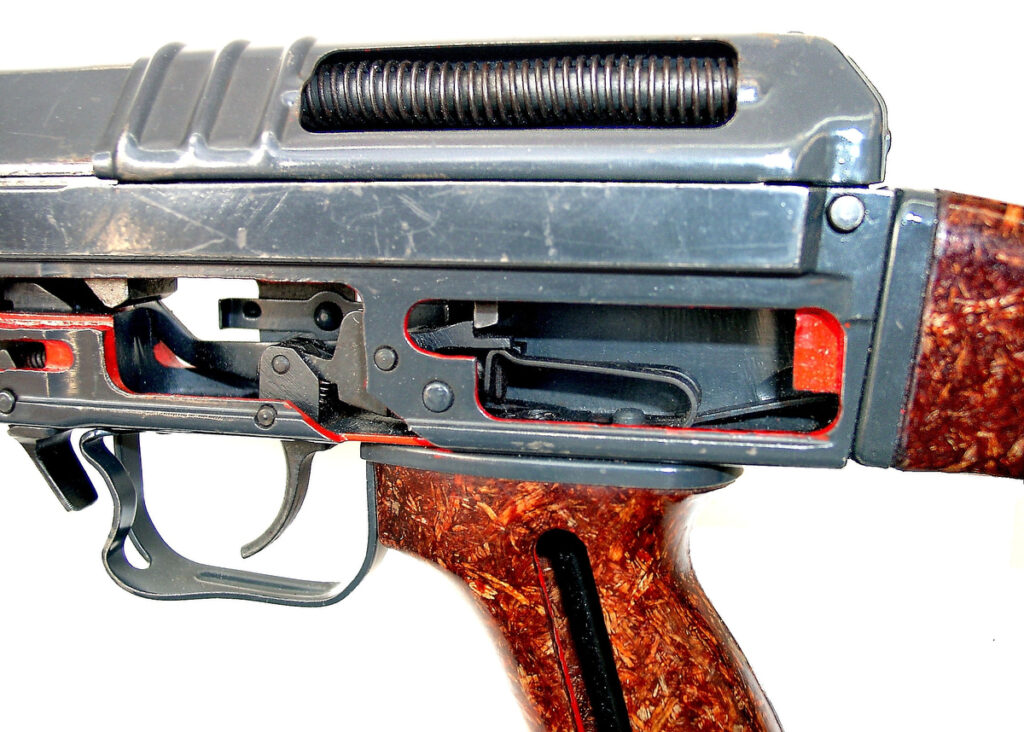
The SA vz. 58 is a gas operated weapon like the AK47, in which the gas pressure leaves the barrel at a barrel vent and flows through a gas-channel to push on a piston. But at that point the similarity ends. On the AK47, the gas piston and the bolt carrier are made of one piece and are moving a long way back and forth. On the SA vz. 58 the two parts are separated and only a short stroke is transferred from the piston to the bolt carrier. At the gas channel, the distance between the compression chamber and the two gas outlet holes is very short, only 0.4 inches. The upper hand guard does not contain a piston tube with holes for pressure reduction like the AK and is entirely open on its underside. Due to the separate construction, the gas piston has its own return spring which is located inside the rear sight base.
After the stroke, the bolt carrier moves back 0.55 inches. Then the breech block is lifted up into a recess at the underside of the bolt carrier. This way the bolt is unlocked. From now on, the bolt carrier and bolt are moving back together. The empty case is pulled out of the chamber and ejected upwards. Finally, the bolt carrier is pushed forward again by the recoil spring taking a new round from the magazine and pushing it into the chamber. Just before the bolt carrier reaches its end position, the breech block drops down and locks the bolt. When the trigger is pulled, a cylindrical striker hits the firing pin and pushes it into the cartridge primer. To avoid a prematurely firing, a strip of sheet spring blocks the striker until the bolt carrier has reached its end position.
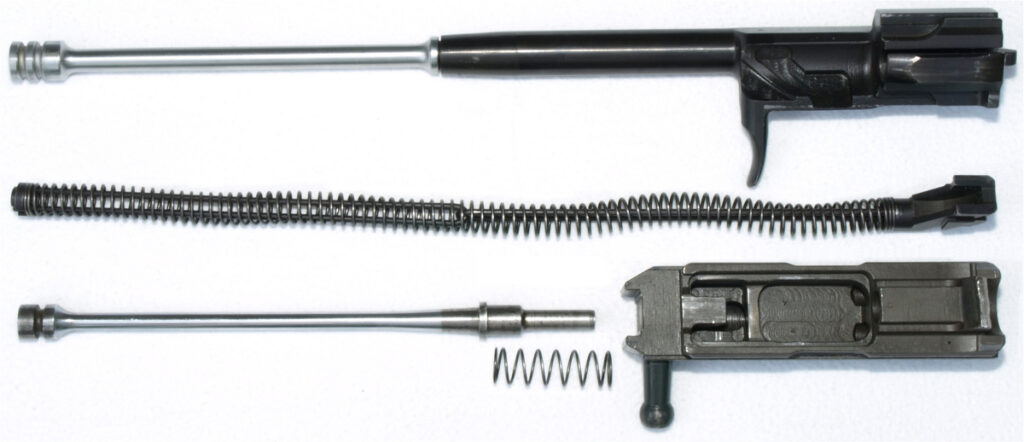
When the last cartridge is fired, the follower of the magazine pushes a small locking bar upwards inside the housing. It blocks the bolt in the open position. Now the magazine can be easily changed and the weapon is ready to fire again without cocking. With the bolt in its rearward position, the empty magazine can optionally be filled from stripper clips. For this purpose two grooves for the standard M43 stripper clips are milled into the face of the bolt carrier. The light metal magazines are not interchangeable with AK47 magazines. The fire selector is located on the right side above the trigger and can be operated with the thumb. Its movement is noiseless and the position can be recognized by feel in the dark.
The developers of the SA vz. 58 did a good job. Since its introduction until today, the weapon remains almost unchanged. The robust design made of solid steel (except for the top-cover, trigger guard and a few small parts that are stamped from sheet metal) has been fully proven. Bolt, gas piston and the inside of the barrel are chrome plated. For corrosion protection, all surfaces of the phosphated weapon are additionally coated with a resistant baking enamel.

Two basic models of the SA vz. 58 are most common: The model 58 P with fixed plastic stock (initially made of wood) and the model 58 V with a metal folding stock. For both models, a 6.35-ounce bayonet is available. A special version is the model 58 Pi with night vision equipment: NSP-2 night vision, flash hider and bipod. Some weapons were originally prepared to accept a VG70 rifle grenade launcher (Vrhaè Granátù). These weapons got a shoulder pad, a different rear sight-scale, and the bayonet-mount was moved to the right side of the front sight base. Instead of the lower handguard, the grenade launcher was fixed and hooked into the underside of the front sight base.
Many other models never got beyond the prototype status, like the model AP-Z 69 in 7.62x51mm from 1966/1967 or the assault rifle UP-Z 70 in 5.56x45mm from 1970. Even a bullpup-design (model EZ-B) was tested in 1976. A light machine gun version was planned (project KLEČ) and Vtúvm Slavičín developed a special sniper rifle (model 58/97). The same company also designed a model in 9x19mm (model 58/98)
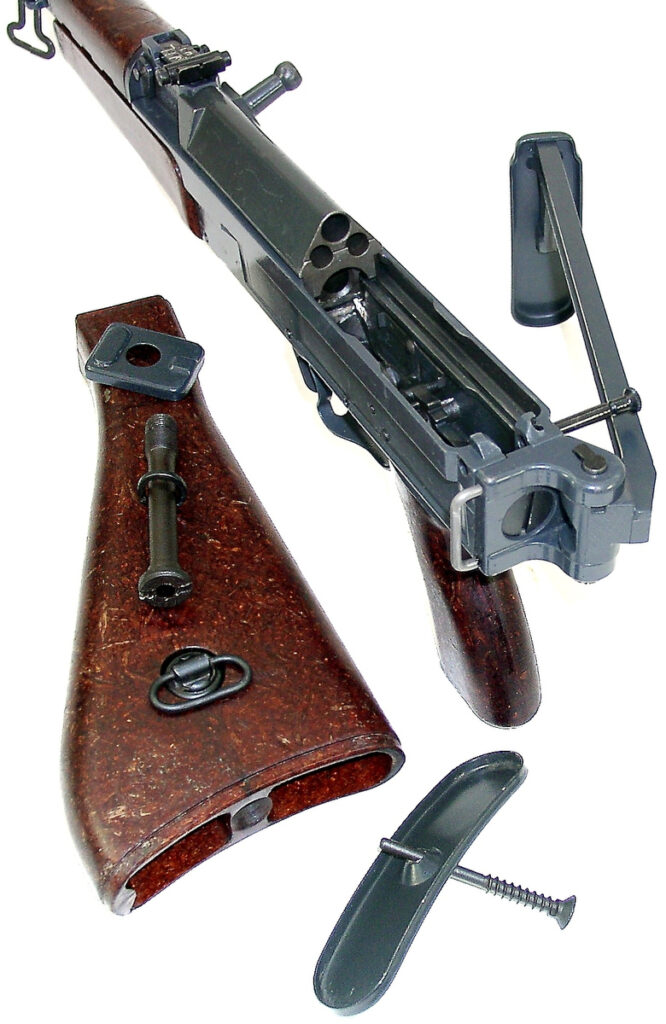
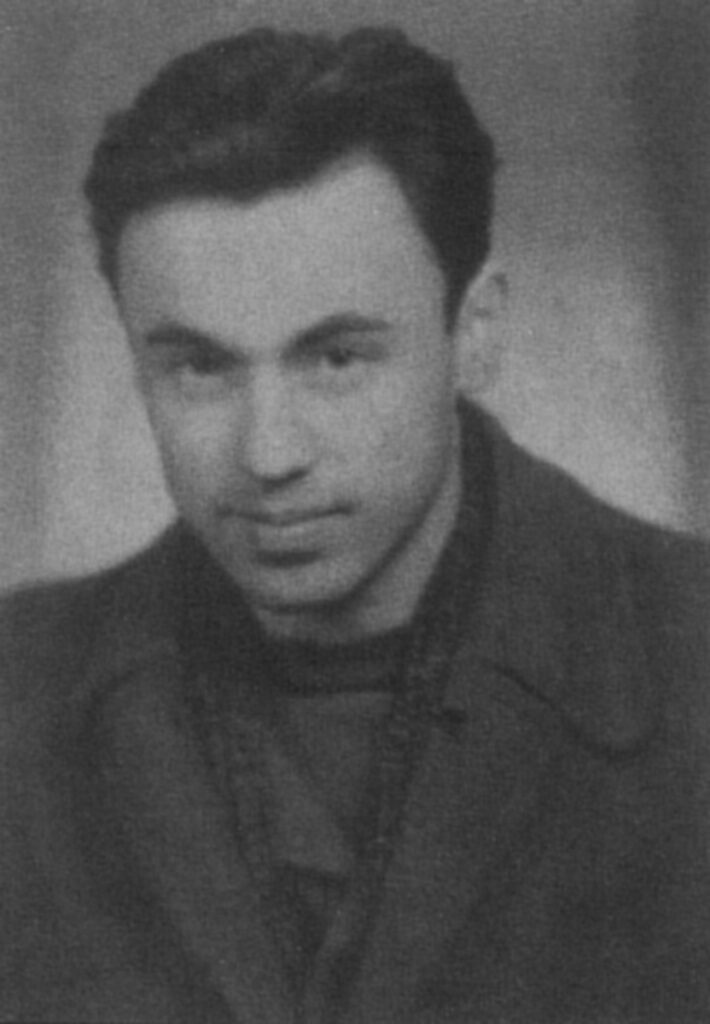
The SA vz. 58 is still in use with the Czech army. From 1958 to 1964 about 400,000 weapons have been produced. After a break of four years the production at Česká Zbrojovka was resumed from late 1968 to 1984 with an output of more than 500,000 weapons. Damaged weapons were sent to the military maintenance company 025 “VOP 025” in Nový Jičín (Vojenský opravárenský podnik 025) for repair. Depending on the extent of repairs, including the replacement of many parts, often completely new weapons were created, but they always kept their old serial number. Spare parts and models for the civilian market are still in production today.

A big secret is the export of the SA vz. 58. Information isn’t available from the manufacturer or the army. Former employees, however, report deliveries to India, Vietnam, Egypt, and other countries. After the 1989 revolution, a Czech-Swiss company bought 25,000 surplus weapons from the army and exported them
In the 1980s, the army life of the SA vz. 58 seemed to be over. A new weapon (project LADA) for the Russian cartridge M74 in 5.45×39.5mm was in development. By exchanging different components, a model-family from submachine guns to light machine guns could be assembled. Due to many delays and a stop of the development, the LADA-models could not yet replace the SA vz. 58.
And so still today the Czech soldiers serve on active duty with their SA vz. 58 – although modified with various accessories.
Technical Specifications
| Caliber: | 7.62x39mm |
| Magazine capacity: | 30 rounds |
| Rate of fire: | 800 rpm |
| Length with extended stock: | 33.3in |
| Length with folded stock: | 25in |
| Length of barrel: | 15.4in |
| Weight (empty): | 6.8lb |
| Weight (loaded): | 7.9lb |
